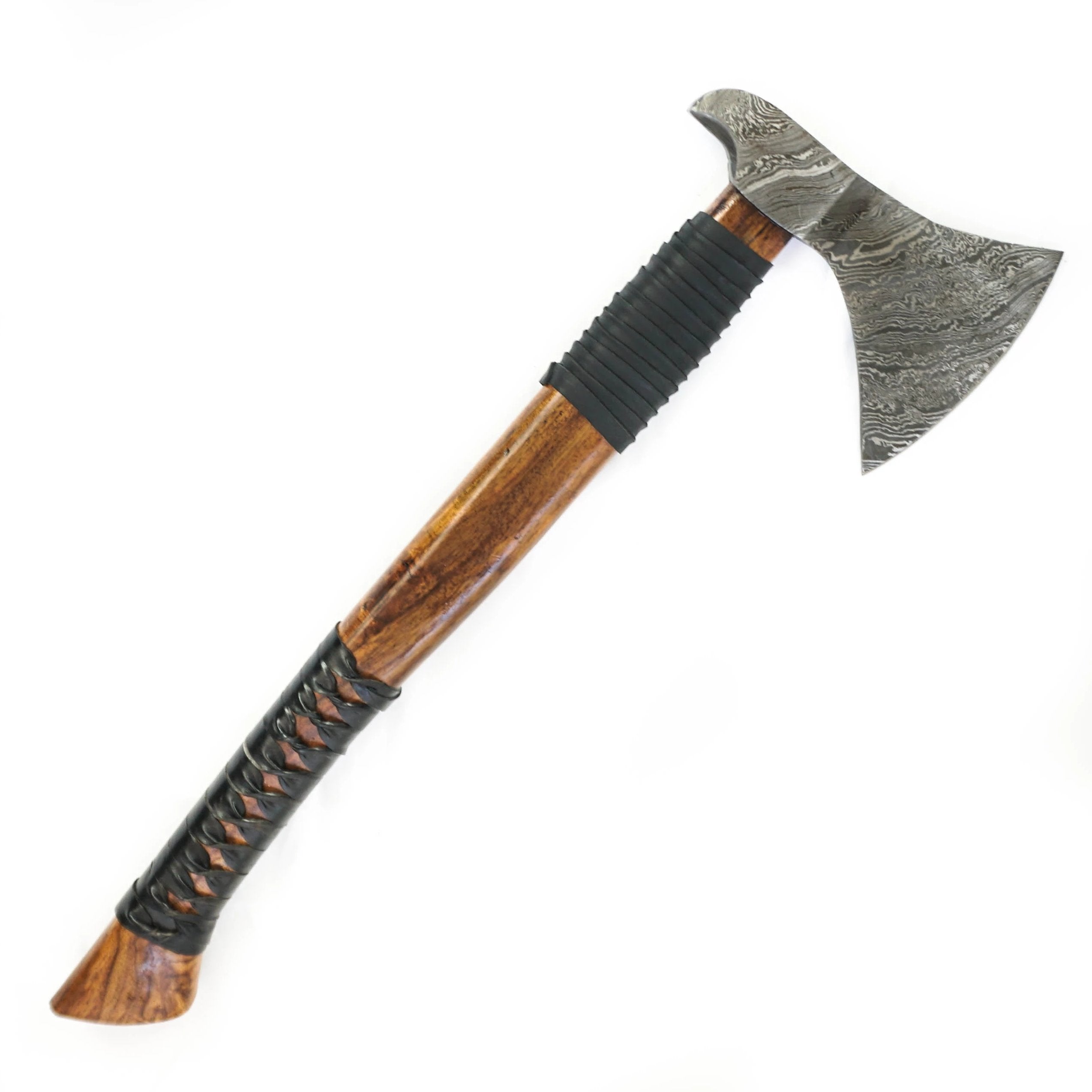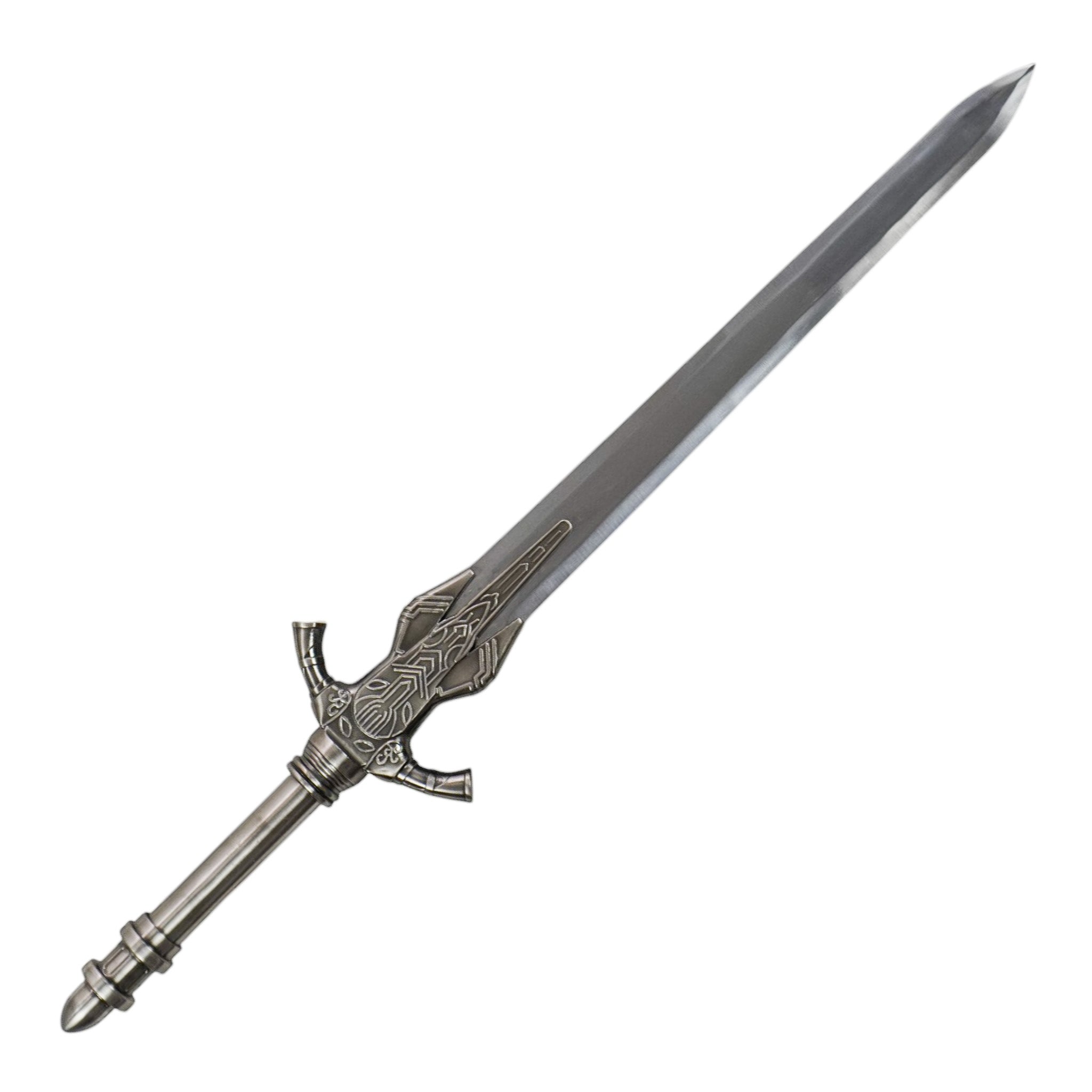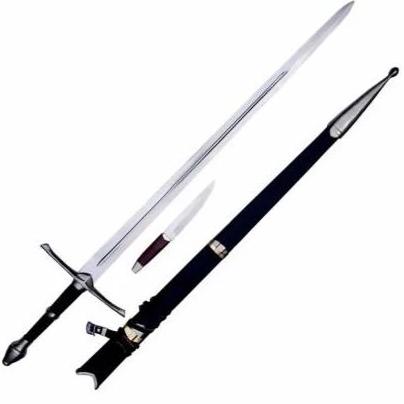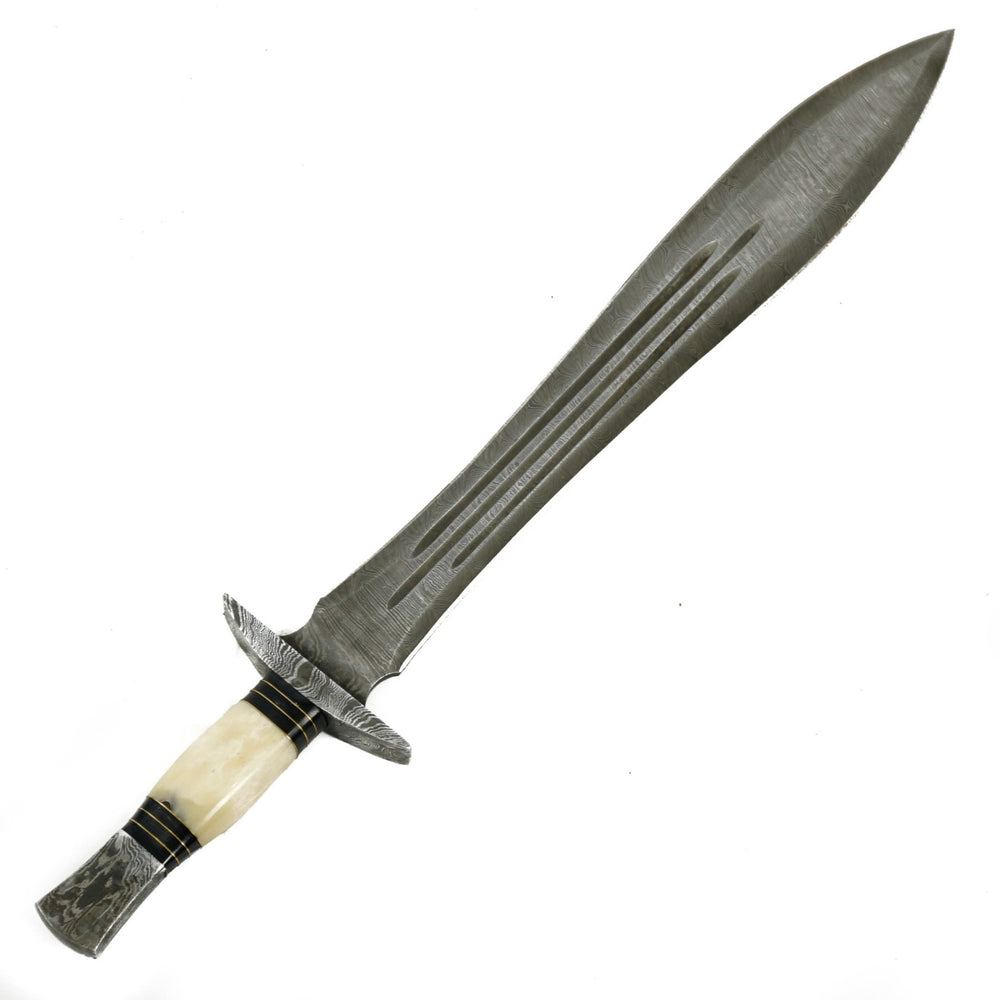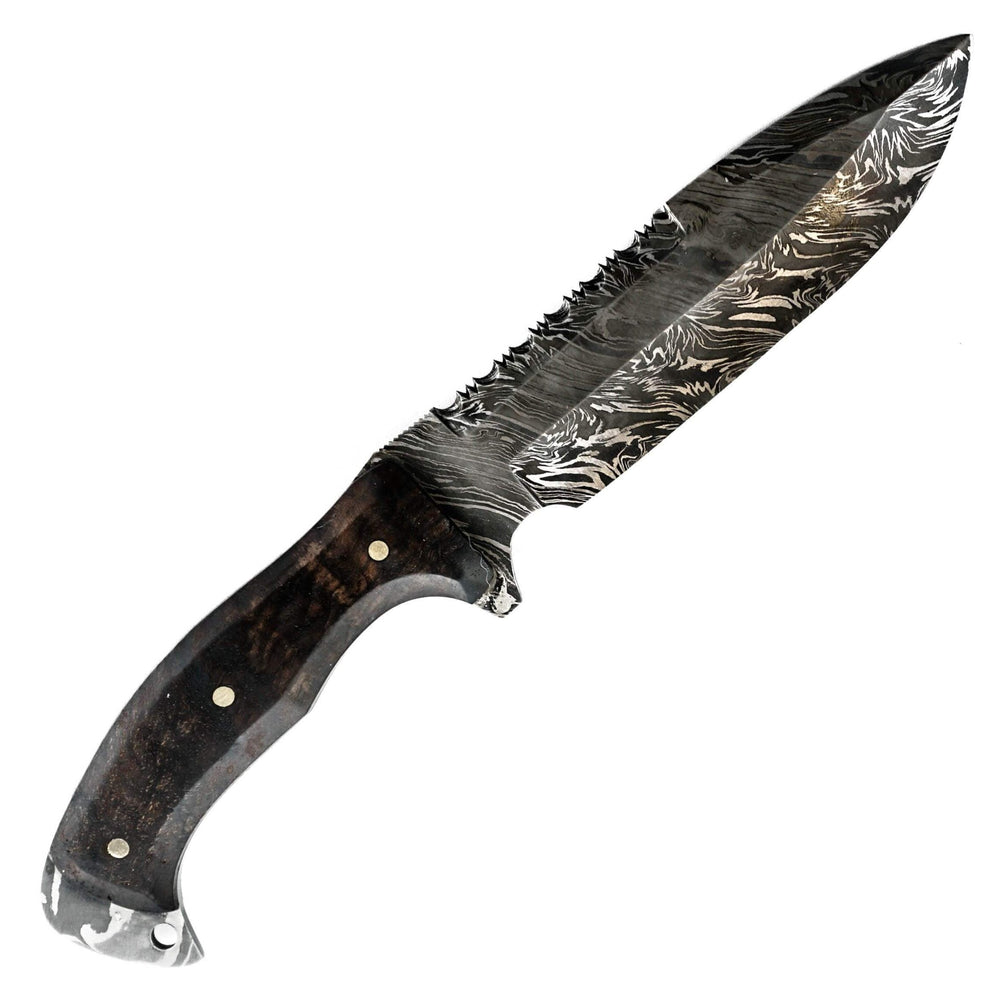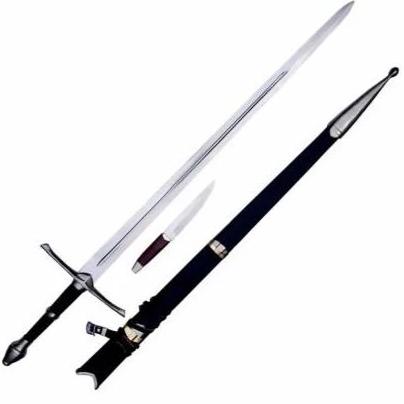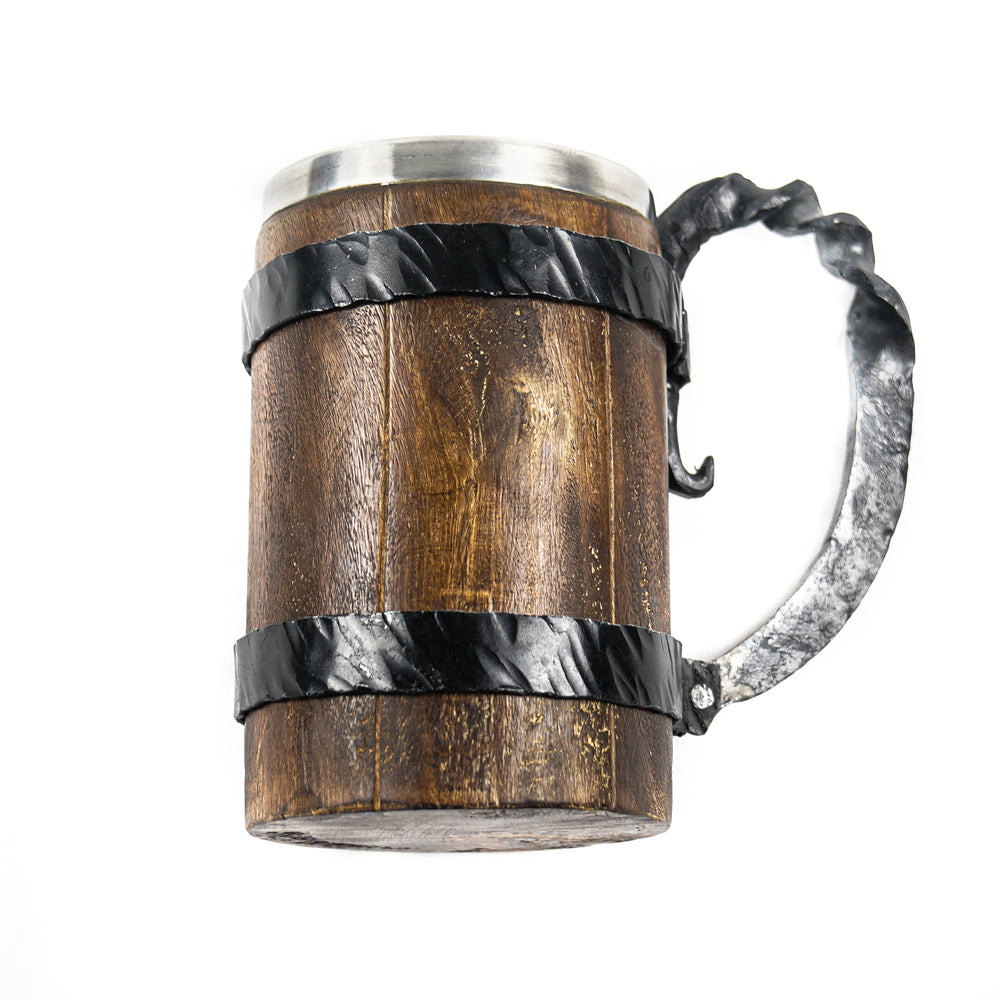Prehistoric Weapons And Tools: A Journey Through Time
Journey back to over three billion years ago, when our ancestors used the first weapons and tools. Humans have depended on stone and other materials for protection, hunting, and foraging for millions of years.
Prehistoric guns and tools have been used to defend against predators, hunt games, cultivate plants and fruit, create artwork, and more. This guideline is a must-read if you’re curious about these ancient implements' history.
We’ll take you on an educational exploration through time. Here we discover how early humans used different prehistoric weapons and tools which allowed them to survive in their environments. Including tools from sharp pebbles to terrifying clubs armed with spikes!
At Battling Blades, you find more information on ancient weapons and blades.

Understanding Prehistoric Weaponry And Tools – Overview Of The Evolution Of Weapons And Tools
The evolution of prehistoric tools and weaponry can be traced back to the earliest human civilization. From the simple stone tools used for hunting and gathering in prehistoric times to the intricate weaponry of the medieval period.
The evolution of tools and weapons has played a crucial role in human survival and progress.
The Middle Ages saw a sharp rise in the use of weapons, from swords and spears to crossbows. Utilizing these weapons in conflicts was pivotal in shaping the course of world history.
In the 1500s, guns began to make their way onto the battlefield, revolutionizing warfare forever.
Today, we can look back on the history of tools and weaponry and marvel at the ingenuity and innovation that went into their development and use.
The Basics – Identifying The Different Types Of Weapons And Tools From Prehistoric Times
When it comes to prehistoric tools and weapons, there are several types that our ancestors used to survive in their environments. These implements were designed for various tasks, such as hunting, gathering, and crafting. Let's look at the different types of prehistoric tools and weapons.
Sharp Pebbles
One of the earliest known prehistoric tools was a sharp pebble. These could be used for various purposes, such as cutting, scraping, and digging. The edges of the pebbles could be chipped away or sharpened to make them more effective.
Stone Knives
Another type of prehistoric tool was the stone knife. These were made by chipping away a stone until it had a sharp edge. Stone knives were used for tasks such as cutting meat and vegetables.
Clubs
Clubs were one of the earliest weapons used by prehistoric humans. These were typically made from a thick tree branch, or wood sharpened into a blunt weapon. Clubs were used for hunting and self-defense.
Spears
Spears were another common prehistoric weapon. These were made from a long, straight stick with a pointed end. Some spears had sharp stone tips that could be used for hunting, while others were used for fishing or as a tool for gathering fruit or plants.
Bows And Arrows
One of the oldest known projectile weapons is the bow and arrow. These were used for hunting and warfare. Bows were typically made from a piece of wood that had been curved, while arrows were made from wood with a pointed stone or bone tip.
Moving forward, the Middle Ages saw a significant advancement in weaponry. Here are some different types of medieval weapons used:
Swords
Swords were a primary weapon in the Middle Ages. These were typically made from iron and had long, sharp blades.
Swords were used for hand-to-hand combat and could be wielded with one or two hands.
Axes

Axes were another common weapon in the Middle Ages. These were typically made from iron or steel and had a sharp edge on one or both sides. Axes were used for both fighting and chopping wood.
Maces
Maces were blunt weapons with a heavy head on the end of a long handles. These were typically made from wood or iron and were designed to deliver a crushing blow to an opponent.
Pikes
Pikes were long spears that infantry soldiers used. These were typically around 16 feet long and were used to keep enemy soldiers at a distance.
Crossbows
The crossbow was a significant advancement in medieval weaponry. This weapon used a crank and lever system to load and fire arrows, making it much more powerful than a traditional bow.
Weapons in the 1500s, medieval firearms emerged as a powerful weapon in warfare. Here are some of the weapons used during this period:
Muskets
Muskets were one of the earliest types of medieval firearms. These were typically made from iron and had a long barrel. Muskets were used in large formations to deliver a volley of fire at enemy soldiers.
Pistols
Pistols were smaller, more compact firearms that individuals could carry. These were typically used as a secondary weapon when a musket was impractical.
Prehistoric tools and weapons have been vital to human survival for millions of years. From sharp pebbles to sophisticated firearms, our ancestors have developed and used various implements. They used it to adapt to their environments and protect themselves from predators and enemies.
Understanding the different types of prehistoric tools and weapons can give us a glimpse into our past and help us appreciate the ingenuity and resourcefulness of our early ancestors.
Check out Blades of Destiny: The Ancient Tools And Weapons That Crafted History.
Stone Age Technology – Examining How Ancient Peoples Used Rocks, Stones, And Primitive Instruments To Utilize Resources

Humans have used various techniques and tools throughout history to survive and thrive. The Stone Age, for instance, saw primitive instruments such as stones and rocks being utilized to obtain resources.
Prehistoric tools and weapons were used to hunt wild animals for food, create clothing, and build shelters. Similarly, the medieval period was characterized by warfare and weapons such as swords, knives, and bows and arrows.
Middle Ages weapons were designed for close combat, with soldiers often fighting in battles or duels.
Medieval weapons changed over time, with the development of metalwork and gunpowder. This led to the creation of new and powerful weapons. These tools significantly impacted history, from medieval guns to the most common medieval weapons.
By examining Stone Age technology and medieval weaponry, we can better understand things. Like how ancient peoples used innovation and ingenuity to overcome challenges and achieve their goals.
Bronze Age Weaponry – Unlocking The Mysteries Of How Metal Working Helped Create Advances In Warfare

From prehistoric times to the middle ages, weaponry has been pivotal in warfare. Prehistoric tools and weapons were made from simple materials such as wood and stone. Still, mastering metalworking helped advance warfare over time, creating more sophisticated and deadly weapons.
Middle Ages weapons saw a significant evolution from the dark ages. The advancements in military technology during this period led to the creation of some of the best medieval weapons ever conceived.
From cool medieval weapons like swords and axes to medieval guns, the 1500s saw an explosion in the variety of weaponry. Some of the most common medieval weapons included spears, maces, and longbows. The names of medieval weapons are still popular today.
The most effective medieval weapon was often a matter of preference. But the popularity of medieval melee weapons like maces and swords is a testament to their efficiency.
The Big medieval weapons like trebuchets and battering rams were used to breach enemy fortifications. While the 14th and 12th-century weapons were still used during the medieval period.
Regardless of the period, it is clear that medieval weaponry has a fascinating history. Unlocking the mysteries of how metalworking helped create these advances in warfare is critical to understanding this historical period.
Iron Age Invention – Exploring How Metallurgy And Blacksmithing Revolutionized Weapon Making
During prehistoric times, humans had to rely solely on materials such as stone and bone to create their defenses. However, with the invention of metallurgy and blacksmithing during the Iron Age, a revolution in weapon-making allowed for much more advanced and effective weapons.
The Iron Age: Widespread Use Of Iron Tools And Weapons
The Iron Age began around 1200 BCE and was characterized by the widespread use of iron tools and weapons. Iron was much stronger and more durable than other materials, making weapons sharper and more effective.
Blacksmiths could heat the iron and shape it into different forms. They did so for creating swords and other weapons that were not previously possible with stone or bone.
Notable Medieval Weapons: The Longsword And Halberd
One of the most notable Middle Ages weapons was the longsword, a versatile weapon that could be used for thrusting and slashing. The 14th century also saw the development of the halberd. This was a long polearm with an axe head and spike on the end. This weapon was effective in both close combat and in long-range attacks.
Other Notable Medieval Weapons
Other notable medieval weapons include the mace. This consisted of a spiked ball on the end of a handle, and the crossbow, a ranged weapon that could fire bolts with great force. The 1500s saw the introduction of firearms, which quickly revolutionized warfare. They had the capability to fire projectiles at high speeds and kill from a distance.
Overall, the invention of metallurgy and blacksmithing during the Iron Age revolutionized weapon-making and created stronger, more durable, and more effective weapons. These weapons played a significant role in the history of warfare and continue to be studied and appreciated to this day.

Modern Perspectives - Applying Modern Approaches To Prehistoric Technologies For Further Research And Development
In recent years, there has been a growing scientific interest in prehistoric tools and weapons their potential for modern research and development. With the help of modern technologies, archaeologists and researchers have gained a much deeper understanding. It elaborated on how early humans used these implements and how they helped shape human history.
This guideline will look at how modern perspectives are applied to prehistoric technologies for further research and development.
Prehistoric tools and weapons have been a critical part of human history for millions of years. From the first simple stone tools to the sophisticated swords and guns of the medieval period, these implements have played a crucial role in human survival, warfare, and cultural development.

Today, we can learn much about early human societies and technology by studying these ancient artifacts and applying modern perspectives and technologies to further our understanding.
Applying Modern Approaches To Prehistoric Tools And Weapons
With the advent of new technologies like computer modeling, 3D printing, and scanning electron microscopy, researchers have gained new insights. They learned about how ancient tools and weapons were made and used.
For example, by creating virtual replicas of stone tools and weapons, scientists can conduct detailed tests. They do so to understand how they were likely used and how they may have been improved over time.
Similarly, by scanning electron microscopy, researchers can examine the minute details of an artifact's surface. It also helps them understand how it was made and used in much greater detail.
Modern Research And Development On Medieval Weapons
While prehistoric tools and weapons are fascinating to study in their own right, they also have much to teach us about modern military and engineering technologies.
By checking the development of medieval weapons like swords, lances, and crossbows, researchers can learn about advancement. Like how metallurgy and engineering allowed the creation of more effective weapons.
This knowledge can be applied to modern research and development for weapons, armor, and other military technologies.
Prehistoric tools and weapons continue to captivate the imagination of researchers and archaeologists worldwide. Application of modern approaches and technologies can be used to studying these ancient artifacts.
We can gain a much deeper understanding of how early humans used them and how they helped shape human history.
Furthermore, modern research and development can benefit greatly from the insights from studying prehistoric tools and weapons, making them highly relevant to our modern world.

Battling Blades
Today, the interest in prehistoric weapons and tools has led to the creation of replica weapons. These replicas allow people to appreciate the ingenuity and craftsmanship of prehistoric weapons without the danger of using the original weapons.
Battling Blades is one website that offers a variety of high-quality replica weapons from different periods. It includes prehistoric and medieval weapons. Battling Blades provides a detailed description of each weapon and its historical significance.
With these replicas, people can gain a deeper understanding and appreciation of the evolution of weapons. The contributions made by our early ancestors.
By exploring the past and learning about the tools and weapons used by our early ancestors. We can better understand our present and appreciate our progress as a society.
Conclusion
From cave walls to Stone Age weapons and tools, it’s incredible how much humans have learned and adapted through the ages. We have gone from sharp pebbles and stakes to swords and spears fashioned from metal.
While we may use more sophisticated materials for weaponry today. This exploration of prehistoric weapons and tools has shown us how much strength and ingenuity earlier generations had to survive.
Whether we look at ancient weaponry as an art form or a tool used in historical combat. Researching the origins of our ancestors’ weapons brings an interesting perspective on cultural development over time.
This read must have interested you to learn more about early human civilizations, their tools, and combat methods. Battling Blades offers knowledgeable advice on various topics related to prehistory! It’s time to research back in time: explore prehistoric weaponry with Battling Blades!

